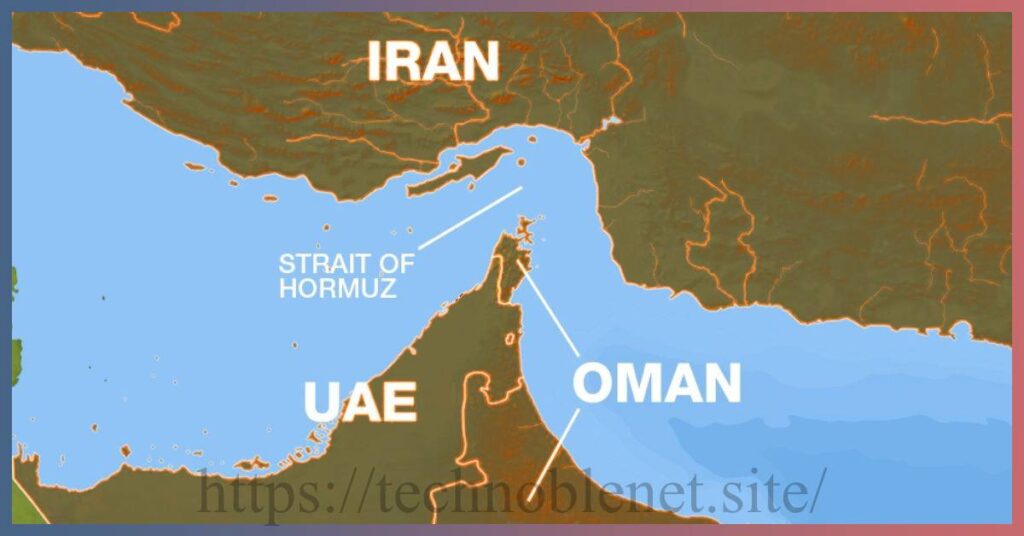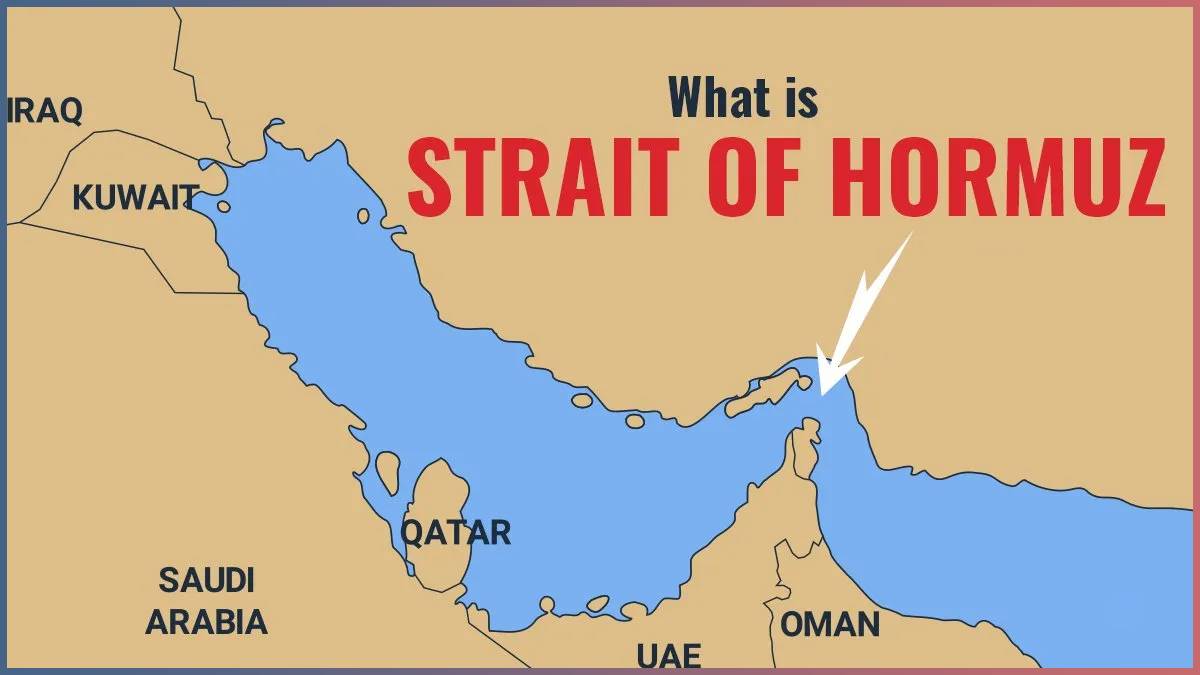Amidst new US-Iran conflicts, the Strait of Hormuz faces renewed threats. Learn how a potential closure of this crucial shipping lane could impact global oil prices and spark widespread economic instability. Understand the high stakes of this strategic chokepoint.
Table of Contents
The Strait of Hormuz: A Global Chokepoint Under Constant Scrutiny
Strait of Hormuz. This narrow waterway, connecting the Persian Gulf to the open waters of the Arabian Sea, stands as one of the world’s most critical maritime chokepoints. Its strategic significance reverberates across global energy markets, geopolitics, and international security. The Strait of Hormuz is not just a body of water; it’s a barometer of regional stability and a constant focal point for international diplomacy and military vigilance.
A Gateway to Global Energy
Vital Waterway. The Strait of Hormuz is located between Oman and Iran. It serves as the sole sea passage for vast quantities of oil and liquefied natural gas (LNG) originating from the oil-rich nations of the Persian Gulf. These include major producers such as Saudi Arabia, Iraq, the United Arab Emirates (UAE), Kuwait, and Qatar. Without access to this strait, a significant portion of the world’s energy supply would be landlocked.
Oil Flow. Approximately 20% of the world’s daily oil consumption, translating to over 20 million barrels per day, transits through the Strait of Hormuz. This makes it an indispensable artery for global energy security. Any disruption here sends immediate ripples across international oil markets, impacting prices and economic stability worldwide. The sheer volume of crude oil and petroleum products moving through this passage underscores its unparalleled importance.
LNG Shipments. Beyond crude oil, the Strait of Hormuz is also vital for the global trade of liquefied natural gas. Qatar, a leading LNG exporter, relies almost entirely on this strait to deliver its gas to international markets, particularly in Asia. The economic implications of any blockage would extend far beyond oil, affecting a broad spectrum of global industries and energy needs.

Geographic Realities and Navigational Challenges
Narrow Passage. At its narrowest point, the Strait of Hormuz is approximately 21 nautical miles (39 kilometers) wide. However, the actual navigable shipping lanes are significantly more constrained, consisting of two three-kilometer-wide channels for inbound and outbound traffic, separated by a two-kilometer buffer zone. This inherent narrowness amplifies its vulnerability to disruption.
Strategic Islands. Iran maintains significant control over the northern coast of the Strait. Crucially, Iran also possesses several strategic islands within or near the Strait of Hormuz, including Qeshm, Hengam, and Abu Musa. These islands provide vantage points and potential bases for monitoring and, in extreme scenarios, interdicting maritime traffic. Their geographic positioning adds another layer to the complex security dynamics of the region.
Deep Waters. Despite its narrowness, the Strait of Hormuz is deep enough to accommodate the world’s largest crude oil tankers, known as Very Large Crude Carriers (VLCCs) and Ultra Large Crude Carriers (ULCCs). This allows for efficient, high-volume transport of energy resources, but also means that any incident involving such vessels could have severe consequences, including environmental disasters and prolonged blockages.
Geopolitical Tensions and Historical Flashpoints
Iran’s Position. Iran’s northern border runs along the Strait, granting it immense strategic leverage. Tehran has historically viewed the Strait of Hormuz as a vital component of its national security and, at times, a powerful bargaining chip in its dealings with the international community. Threats of closure, though rarely acted upon, have been a recurring feature of heightened tensions.
“Tanker War.” The most significant historical example of sustained conflict in the Strait of Hormuz was the “Tanker War” during the Iran-Iraq War in the 1980s. Both sides targeted each other’s oil tankers, as well as neutral shipping. This period saw a dramatic increase in maritime insecurity and demonstrated the potential for widespread disruption to global oil supplies. The United States, among other nations, deployed naval forces to protect shipping lanes.
Recent Incidents. In recent years, the Strait of Hormuz has remained a volatile area. Incidents involving commercial vessels, drone attacks, and missile strikes in the wider region have kept global attention firmly fixed on its security. These events often coincide with spikes in geopolitical tensions, particularly between Iran and Western powers, or between regional rivals.
US Presence. The United States maintains a significant military presence in the region, primarily through its Fifth Fleet, headquartered in Bahrain. This naval force is tasked with ensuring freedom of navigation and protecting international shipping in the Persian Gulf and its approaches, including the Strait of Hormuz. The presence of powerful naval assets underscores the international community’s commitment to keeping the strait open.
The Threat of Closure: A Hypothetical Catastrophe
Economic Suicide? While Iran has often threatened to close the Strait of Hormuz, many analysts argue that such a move would be an act of economic self-sabotage for Tehran. Iran itself relies heavily on the Strait for its own oil exports, which constitute a significant portion of its national revenue. A full closure would effectively halt its own economic lifeline.
Global Repercussions. Despite this, the threat remains potent due to the catastrophic global implications of a closure. Even a temporary disruption could send oil prices skyrocketing, trigger widespread economic instability, and potentially lead to a global recession. The cascading effects would be felt across all sectors, from transportation and manufacturing to food prices and consumer goods.
Limited Alternatives. While some Gulf states, notably Saudi Arabia and the UAE, have invested in pipeline networks that bypass portions of the Strait of Hormuz, these alternatives have limited capacity. They cannot fully compensate for the vast volumes of oil and gas that typically transit the Strait. This lack of robust alternative routes magnifies the Strait’s strategic importance as a chokepoint.

International Law and Freedom of Navigation
UNCLOS. The principle of freedom of navigation, enshrined in the United Nations Convention on the Law of the Sea (UNCLOS), is central to the international legal framework governing passages like the Strait of Hormuz. While the Strait includes territorial waters of both Iran and Oman, international law dictates that transit passage must be allowed for all vessels.
Iran’s Stance. Iran, however, has not fully ratified UNCLOS and sometimes disputes interpretations of transit passage, particularly for military vessels. This legal ambiguity, coupled with historical grievances and geopolitical rivalries, adds another layer of complexity to the security landscape of the Strait of Hormuz.
International Cooperation. Ensuring the security of the Strait of Hormuz is a shared responsibility of the international community. Collaborative efforts, including naval patrols, intelligence sharing, and diplomatic engagement, are crucial to de-escalate tensions and deter actions that could jeopardize maritime commerce. The stakes are simply too high for unilateral action or prolonged instability.
The Future of the Strait of Hormuz
Persistent Volatility. The Strait of Hormuz will likely remain a flashpoint for geopolitical tensions for the foreseeable future. The confluence of massive energy reserves, regional rivalries, and major power interests ensures its continued prominence on the international stage. Events in the broader Middle East, particularly those involving Iran, Israel, and the United States, often have direct implications for the Strait’s stability.
Adaptation and Resilience. Energy-consuming nations are continuously evaluating strategies to enhance their energy security and reduce their vulnerability to disruptions in the Strait of Hormuz. This includes diversifying energy sources, building strategic petroleum reserves, and exploring new trade routes. However, given the sheer volume of traffic, a complete decoupling from the Strait’s reliance is unrealistic in the short to medium term.
Diplomacy as a Tool. Despite the ever-present military capabilities in the region, diplomacy remains the primary tool for managing tensions and preventing escalation in the Strait of Hormuz. Open channels of communication, de-escalation mechanisms, and a commitment to international law are essential to navigate the complex challenges posed by this vital waterway.
Global Responsibility. The security and uninterrupted flow of commerce through the Strait of Hormuz are a global responsibility. It underscores the interconnectedness of the world’s energy markets and the fragility of peace in a region laden with strategic resources. The world watches the Strait of Hormuz, knowing that its tranquility is paramount to global economic health and stability. Every ship that passes through this narrow, vital passage carries with it the hopes of uninterrupted trade and a stable energy future.
